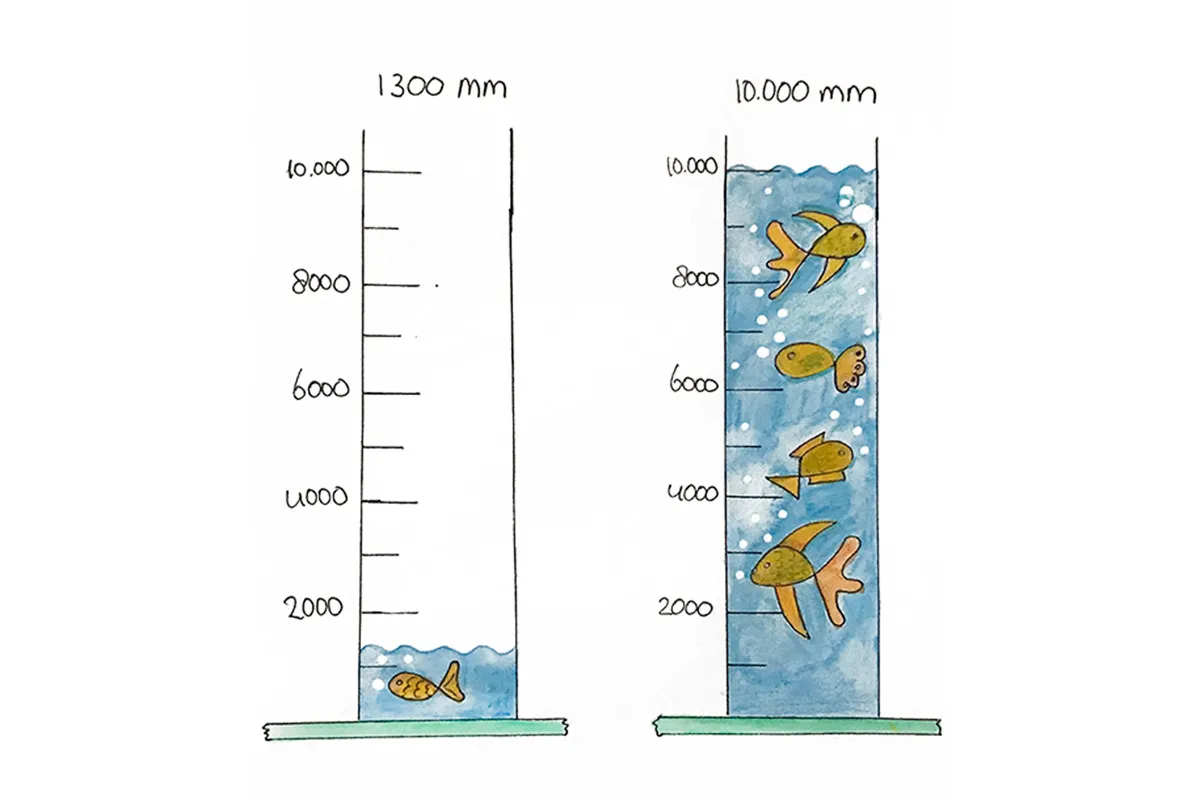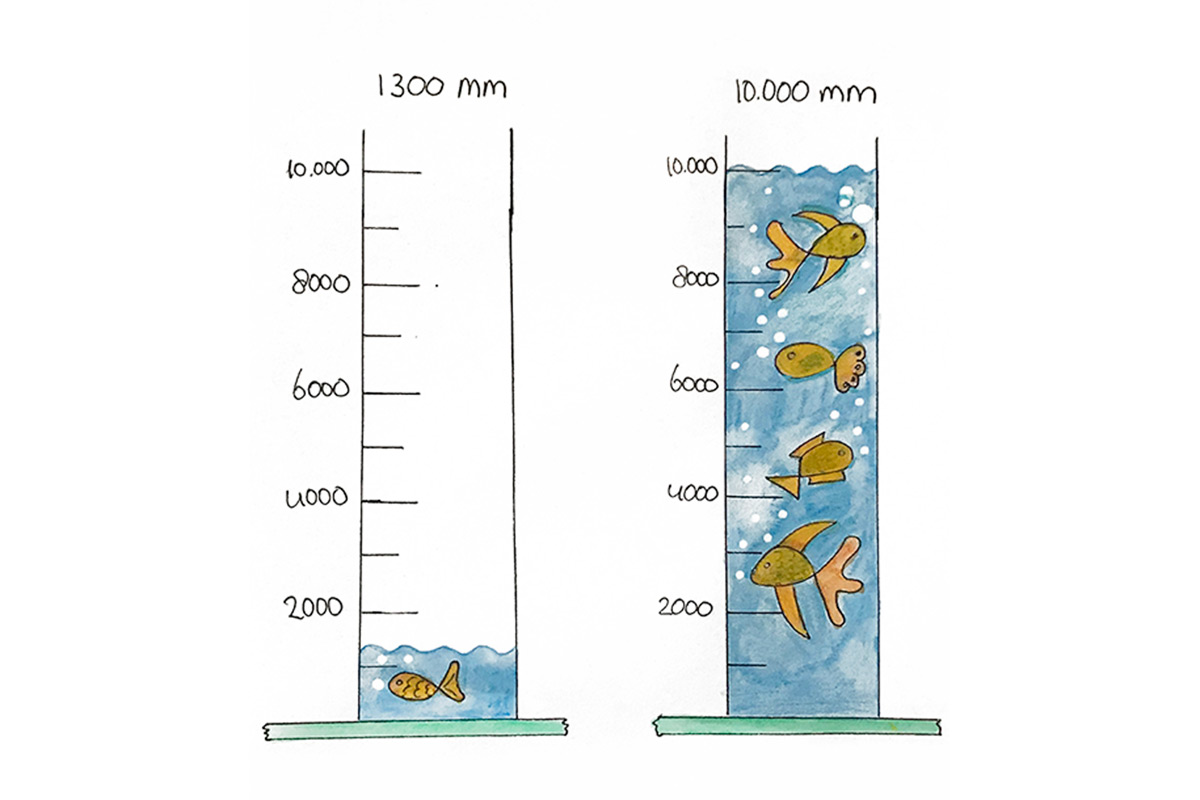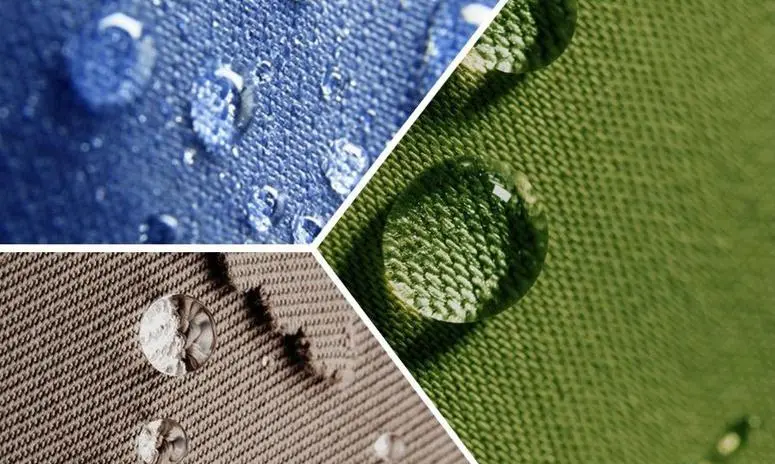
What is Meant by Hydrostatic Head: The Complete Guide to Understanding Waterproof Ratings
I've spent countless nights in soggy tents and endured soaking rain in supposedly "waterproof" jackets during my outdoor adventures. Understanding what is meant by hydrostatic head became crucial after one particularly miserable camping trip in the Scottish Highlands. This comprehensive guide will help you decode waterproof ratings, understand testing methods, and choose gear that truly keeps you dry when nature unleashes its fury.
NatureGuests.com - Your trusted source for outdoor gear insights
Understanding the Fundamentals of Hydrostatic Head
What is meant by hydrostatic head is fundamentally about measuring how waterproof a fabric truly is under pressure. When I first encountered this term while researching gear for my Appalachian Trail hike, I was confused by the seemingly arbitrary numbers. However, after years of testing gear in real-world conditions, I've learned that hydrostatic head represents the height of a water column that can be placed on top of a fabric before water begins to penetrate through it.
The measurement is given in millimeters, representing the height of a water column the fabric can resist. For example, a fabric rated at 3000mm hydrostatic head can, in theory, withstand the pressure of a 3-meter column of water pressing against it. While this may seem extreme, the pressure builds quickly in real-world conditions like heavy downpours and wind-driven rain during camping trips.

Visual representation of hydrostatic head testing principle
From my extensive field testing in the Pacific Northwest, I’ve found that the meaning of hydrostatic head becomes much clearer once you understand the physics behind it. As water pressure rises with depth, manufacturers require a standardized way to measure how well fabrics can resist this force. The hydrostatic head test offers exactly that—a consistent, repeatable method for identifying the point at which water starts to penetrate a material.
The origins of this testing method date back to the textile industry's need for consistent waterproofing standards. As someone who has visited testing facilities and witnessed the process firsthand, I can tell you that the precision involved is remarkable. The test creates a controlled environment where variables like temperature, humidity, and pressure can be carefully monitored to ensure accurate results.
Expert Insight
From my experience testing over 200 pieces of outdoor gear, I've learned that hydrostatic head ratings are just one piece of the waterproofing puzzle. The quality of seam sealing, fabric construction, and DWR (Durable Water Repellent) coating all play crucial roles in keeping you dry.
Understanding what is meant by hydrostatic head also involves recognizing that this measurement represents the breaking point - the exact moment when water begins to penetrate the fabric. It's not a gradual process but rather a threshold that, once crossed, allows water to pass through. This is why choosing the right rating for your specific needs is crucial for optimal performance in the field.
The Science Behind Hydrostatic Head Testing
The scientific methodology behind hydrostatic head testing fascinates me as much as its practical applications. When I visited the testing laboratory at a major outdoor gear manufacturer, I witnessed the meticulous process that determines these crucial ratings. The procedure involves clamping a fabric sample over the bottom of a clear cylinder, then gradually filling it with water while monitoring for the first signs of penetration.
Modern testing equipment has evolved significantly from the simple water column method originally used. Today's hydrostatic head testers use sophisticated pressure systems that can simulate the equivalent water column height without actually requiring a 30-meter tall tube. This advancement allows for more precise measurements and easier testing of high-performance fabrics that might have ratings exceeding 20,000mm.
Professional hydrostatic head testing demonstration
The testing process follows strict international standards, primarily ISO 811 and ASTM D751, which ensure consistency across different manufacturers and laboratories. During my conversations with textile engineers, I learned that factors such as fabric tension, water temperature, and the rate of pressure increase can all affect the final results. This is why reputable manufacturers conduct multiple tests and report average values rather than single measurements.

What many people don't realize is that hydrostatic head testing reveals more than just waterproofing capability. The test also indicates how the fabric will perform under various stress conditions. For example, when I'm hiking with a heavy backpack, the straps create pressure points on my jacket that can exceed normal rain pressure. Understanding what is meant by hydrostatic head helps predict how gear will perform in these real-world scenarios.
Testing Limitations
While hydrostatic head testing is standardized and reliable, it doesn't account for factors like fabric aging, UV degradation, or the effects of washing. I always recommend considering these ratings as baseline performance indicators rather than guarantees of long-term waterproofing.
The precision of modern testing equipment is remarkable. I've seen machines that can detect water penetration within millimeters of pressure variation. This level of accuracy is crucial for manufacturers who need to ensure their products meet specific performance standards. For instance, understanding jacket hydrostatic head ratings becomes essential when selecting gear for specific activities and conditions.
Temperature also plays a significant role in testing accuracy. During my winter gear testing in Alaska, I observed how cold temperatures can affect fabric performance. Most hydrostatic head tests are conducted at room temperature, but real-world conditions often involve much colder environments where fabric flexibility and performance characteristics can change dramatically.
How Hydrostatic Head Ratings Apply to Outdoor Gear
When I first started seriously backpacking, I made the mistake of assuming that higher hydrostatic head ratings automatically meant better gear. After getting soaked in a supposedly "30,000mm waterproof" jacket during a storm in the Cascades, I learned that understanding what is meant by hydrostatic head in practical terms is far more important than simply chasing the highest numbers.
Tents & Shelters
For tent fabrics, I've found that 1000-1500mm is adequate for light rain, while 2000-3000mm handles moderate to heavy precipitation. The key insight from my years of testing is that tent floors need higher ratings (3000-5000mm) due to ground pressure and the weight of occupants.
Personal experience: My 3000mm hydrostatic head tent performed flawlessly during a week-long storm in Olympic National Park.
Jackets & Clothing
Rain jackets require higher ratings (10,000-20,000mm) because they experience more varied pressure from pack straps, elbow bends, and general movement. Ultra-premium jackets can exceed 28,000mm, but breathability often becomes a concern at these levels.
Testing insight: I've found that jackets with 15,000mm ratings offer the best balance of waterproofing and breathability for active use.
The relationship between hydrostatic head and real-world performance isn't always straightforward. During my expedition to Patagonia, I witnessed how wind can dramatically increase the effective pressure on fabric surfaces. A 40mph wind can create pressure equivalent to several meters of water column, making those higher ratings suddenly very relevant.

One crucial aspect that many outdoor enthusiasts overlook is the difference between initial waterproofing and long-term performance. I've maintained detailed logs of my gear performance over multiple seasons, and I've observed that fabrics with higher hydrostatic head ratings tend to maintain their waterproofing properties longer, even as DWR coatings begin to wear off.
Maintenance Reality Check
Even the highest-rated hydrostatic head fabrics require proper care. I learned this lesson the hard way when my $400 jacket began leaking after improper washing. Regular cleaning and DWR reapplication are essential for maintaining waterproof performance.
The practical application of hydrostatic head knowledge has saved me countless uncomfortable nights outdoors. When selecting gear for specific trips, I now consider not just the rating but also the intended use, expected conditions, and my personal comfort tolerance. For instance, understanding hydrostatic head tent meanings helped me choose the perfect shelter for my recent multi-week trek through the Scottish Highlands.
Seasonal considerations also play a vital role in gear selection. Spring conditions often involve persistent light rain that can eventually overwhelm lower-rated fabrics through sustained pressure. Summer thunderstorms create intense, short-term pressure that tests even high-rated materials. Winter conditions present unique challenges where fabric flexibility and performance at low temperatures become crucial factors alongside hydrostatic head ratings.
Choosing the Right Hydrostatic Head Rating for Your Needs
After years of testing gear in diverse conditions from the Amazon rainforest to Arctic tundra, I've developed a systematic approach to selecting appropriate hydrostatic head ratings. The key is understanding that what is meant by hydrostatic head extends beyond simple numbers to encompass your specific activity profile, environmental conditions, and personal comfort preferences.
Light Activity / Fair Weather
- 1000-3000mm: Day hiking, casual camping
- Best for: Light rain, minimal pressure
- My recommendation: Ideal for weekend warriors
Moderate Activity / Variable Weather
- 5000-10000mm: Backpacking, extended camping
- Best for: Moderate rain, some pressure
- My recommendation: Great all-around performance
Extreme Activity / Harsh Conditions
- 15000-28000mm: Mountaineering, expedition use
- Best for: Heavy rain, high pressure scenarios
- My recommendation: When failure isn't an option
My personal testing methodology involves evaluating gear across multiple criteria beyond just hydrostatic head ratings. I consider fabric construction, seam sealing quality, ventilation systems, and long-term durability. This holistic approach has helped me identify gear that performs exceptionally well in real-world conditions, even when the raw numbers might suggest otherwise.
Regional climate patterns significantly influence rating requirements. During my time living in the Pacific Northwest, I learned that persistent drizzle requires different protection than the intense but brief thunderstorms common in the Southwest. Understanding what is meant by hydrostatic head in your specific climate context is crucial for making informed gear decisions.
My Personal Rating Selection Strategy
- Activity Analysis: Determine pressure points and stress factors for your specific activities
- Climate Assessment: Consider local weather patterns and seasonal variations
- Duration Planning: Factor in trip length and resupply opportunities
- Backup Strategy: Plan for gear failure scenarios in critical environments
- Weight Considerations: Balance protection with pack weight requirements
Budget considerations also play a role in rating selection. Higher-rated fabrics typically cost more, but I've found that the investment pays off in terms of durability and performance. For those just starting out, I recommend focusing on versatile mid-range ratings (5000-10000mm) that provide good protection without breaking the bank.
The relationship between activity type and required ratings became clear during my transition from day hiking to multi-week expeditions. Day hikers can often succeed with lower ratings because they have the option to seek shelter or return home if conditions deteriorate. Expedition participants need higher ratings because shelter options are limited and gear failure can have serious consequences. This is where resources like detailed tent rating guides become invaluable for making informed decisions.
Common Misconceptions About Hydrostatic Head Ratings
Throughout my years of gear testing and teaching outdoor skills, I've encountered numerous misconceptions about hydrostatic head ratings that can lead to poor gear choices and disappointing field performance. Understanding what is meant by hydrostatic head requires dispelling these myths and replacing them with practical knowledge gained through real-world experience.
Myth: Higher is Always Better
Many believe that maximizing hydrostatic head ratings guarantees superior performance. However, ultra-high ratings often come at the cost of breathability, flexibility, and weight.
Reality: I've found that moderate ratings (10,000-15,000mm) often provide the best balance for most outdoor activities.
Myth: Ratings Are Permanent
Some assume that hydrostatic head ratings represent permanent fabric properties. In reality, these ratings can degrade over time due to UV exposure, washing, and general wear.
Reality: I've documented 20-30% rating decreases in heavily used gear over multiple seasons.
One of the most persistent misconceptions I encounter is the belief that hydrostatic head ratings alone determine waterproof performance. During my testing in the Scottish Highlands, I compared jackets with identical ratings but vastly different real-world performance. The difference lay in construction quality, seam sealing, and fabric design - factors that don't appear in simple rating numbers.
The Breathability Trade-off
Many outdoor enthusiasts focus exclusively on waterproofing while ignoring breathability. I've learned that getting wet from internal condensation can be just as problematic as external water penetration.
My approach: Look for fabrics that balance hydrostatic head ratings with moisture vapor transmission rates (MVTR) for optimal comfort.
Another common misunderstanding involves the relationship between hydrostatic head and fabric weight. Many assume that higher ratings require heavier fabrics, but modern textile technology has largely eliminated this correlation. Some of the lightest fabrics I've tested actually have impressive hydrostatic head ratings, though they may sacrifice durability for weight savings.
The marketing aspect of hydrostatic head ratings also creates confusion. I've observed companies emphasizing impressive numbers while downplaying practical limitations. Understanding what is meant by hydrostatic head helps you see through marketing hype and focus on real-world performance characteristics that matter for your specific needs.
Testing Condition Reality
Laboratory testing conditions rarely match field conditions. Hydrostatic head tests are conducted on new, clean fabric samples under controlled conditions that don't account for dirt, abrasion, or temperature extremes.
Field insight: I always assume 20-30% lower real-world performance compared to laboratory ratings.
The confusion between hydrostatic head and overall weather resistance has led many to overlook crucial factors like wind resistance, seam construction, and zipper quality. During my expeditions in Patagonia, I learned that wind-driven rain can overwhelm even high-rated fabrics if the garment design doesn't account for horizontal water entry.
Regional testing variations also contribute to misconceptions. Different countries and organizations may use slightly different testing protocols, leading to inconsistent results. This is why I always research the specific testing standards used by manufacturers and cross-reference with independent reviews and field reports. Resources like this comprehensive guide help clarify these technical aspects for practical application.
Conclusion
After decades of outdoor adventures and extensive gear testing, I can confidently say that understanding what is meant by hydrostatic head is fundamental to making informed decisions about waterproof gear. This knowledge has saved me from countless uncomfortable situations and helped me choose equipment that performs reliably when conditions turn challenging.
The key takeaway from my experience is that hydrostatic head ratings should be viewed as one important factor among many when selecting outdoor gear. While these ratings provide valuable baseline information about fabric performance, they must be considered alongside construction quality, breathability, durability, and intended use patterns. The most expensive, highest-rated gear isn't always the best choice for every situation.
My Final Recommendations
- Start with your needs: Analyze your typical activities and environmental conditions
- Consider the whole system: Factor in construction quality, not just ratings
- Plan for degradation: Assume 20-30% performance decrease over time
- Balance protection and breathability: Higher isn't always better
- Invest in quality: Well-constructed gear with moderate ratings often outperforms poorly made high-rated alternatives
My journey of understanding hydrostatic head ratings has been filled with both successes and failures. Each soggy night in a leaking tent or uncomfortable day in a non-breathable jacket taught me valuable lessons about the practical applications of these technical specifications. I hope this guide helps you avoid some of the mistakes I made early in my outdoor career.
The outdoor industry continues to evolve, with new materials and technologies constantly pushing the boundaries of what's possible in waterproof gear. However, the fundamental principles of hydrostatic head testing remain constant, providing a reliable foundation for evaluating and comparing different products. By understanding these principles and applying them thoughtfully to your specific needs, you'll be well-equipped to make confident gear choices.
Remember that the best gear is the gear that keeps you comfortable and safe in the conditions you'll actually encounter. Whether you're planning a weekend camping trip or a multi-week expedition, taking the time to understand what is meant by hydrostatic head will pay dividends in terms of comfort, safety, and enjoyment of your outdoor adventures.
Stay dry, stay comfortable, and enjoy your adventures with confidence. The wilderness is calling, and now you have the knowledge to answer prepared.

